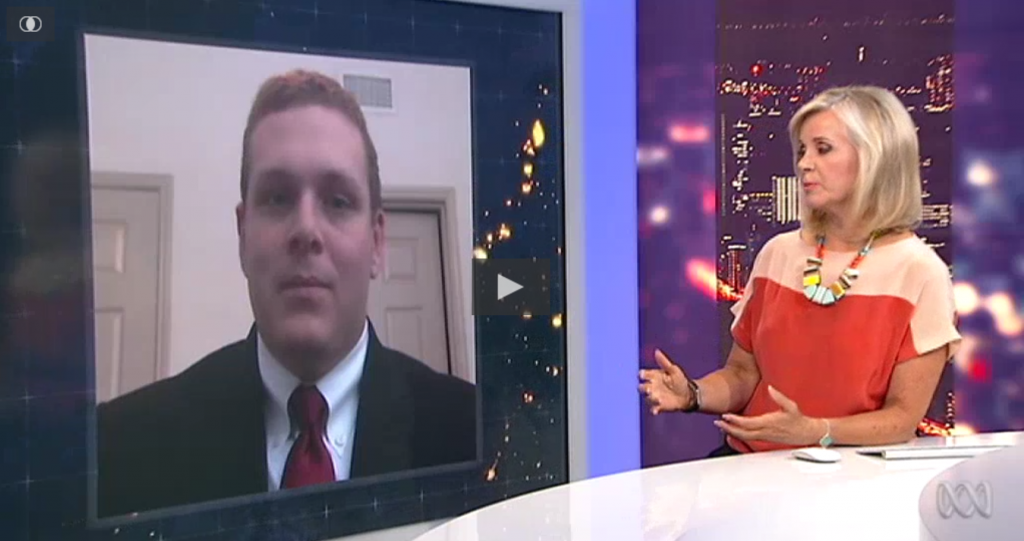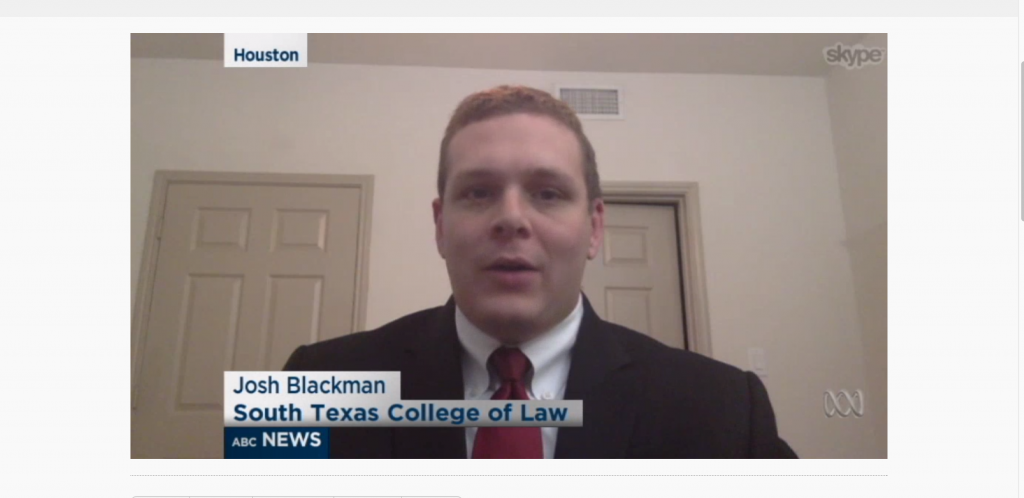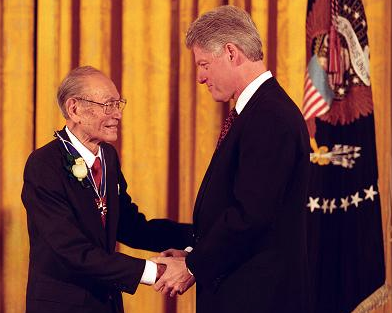Tonight at 9:16 P.M, White House Press Secretary tweeted that Acting Attorney General Sally Yates has been relieved, and President named Dana Boente, the U.S. Attorney for the Eastern District of Virginia as acting Attorney General. (If only Nixon had Twitter during the Saturday Evening Massacre).
.@POTUS has named Dana Boente, US Attorney for the Eastern District of VA as Acting Attorney General. Sally Yates has been relieved.
— Sean Spicer (@PressSec) January 31, 2017
The White House released a statement saying that Yates “betrayed the Department of Justice.”
Yates is out pic.twitter.com/XKyRVpjdv0
— Jordan Fabian (@Jordanfabian) January 31, 2017
How does this work? The Federal Vacancies Reform Act of 1998 provides the general framework for what happens when an officer is removed. Generally, under 5 U.S.C. § 3345(b)(1), in the event of a vacancy, “the first assistant to the office of such officer shall perform the functions and duties of the office temporarily in an acting capacity.” However, that is not the only path. 5 U.S.C. § 3345(b)(2) states that “notwithstanding paragraph (1), the President (and only the President) may direct a person who serves in an office for which appointment is required to be made by the President, by and with the advice and consent of the Senate, to perform the functions and duties of the vacant office temporarily in an acting capacity.” In other words, rather than the “first assistant” being promoted to acting officer, the President could appoint anyone else who has received Senate confirmation–such as a U.S. Attorney–to temporarily fill that vacancy.
That is precisely what happened here.
Update: This thread captures more of my thoughts.
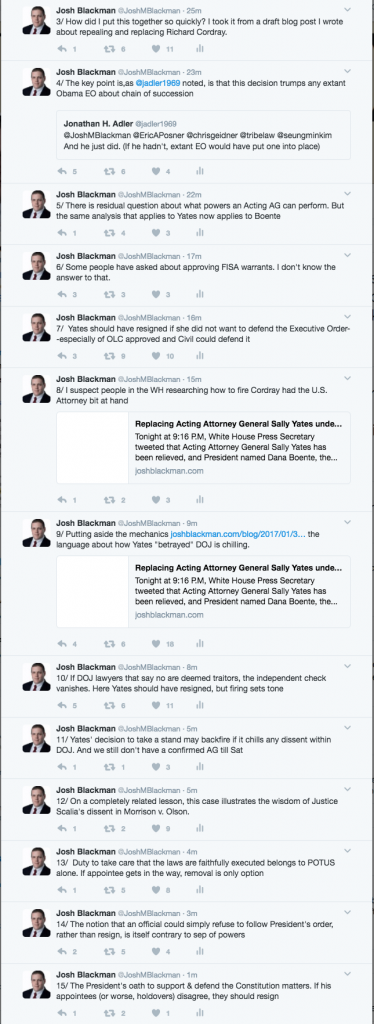
Update 2: did the President select, of all officers, the U.S. Attorney for the Eastern District of Virginia? Under an executive order signed by President Obama on 2010, the U.S. Attorney for E.D.Va. is first in line.
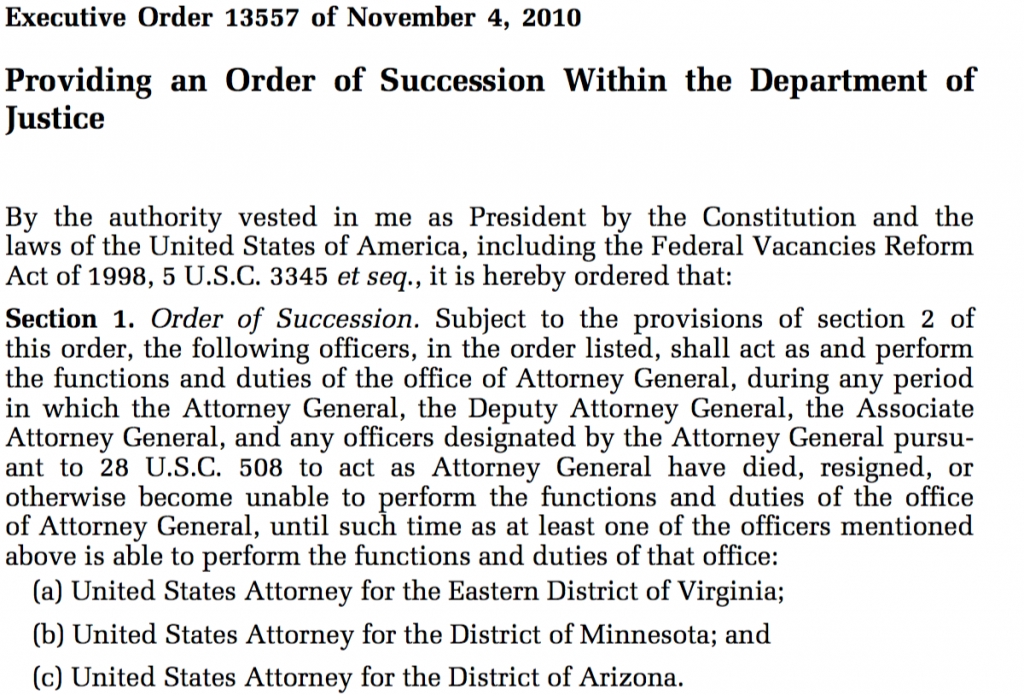
One other note. The order is triggered if the Acting Attorney General has “died, resigned, or otherwise been unable to perform the functions and duties of the office of Attorney General.” I have been researching the emphasized portion, and it has never been litigated whether this includes firing. Now, Trump has set an executive-branch precedent that it does. This will be relevant for the repealing and replacing of Richard Cordray, which gave rise to this entire post.
Update 3: The Executive Order I cited above was revoked by President Obama on January 13, 2017, and a new order changed the order of succession to put the U.S. Attorney for the District of Columbia first in line. He perhaps anticipated Trump would fire Yates…
